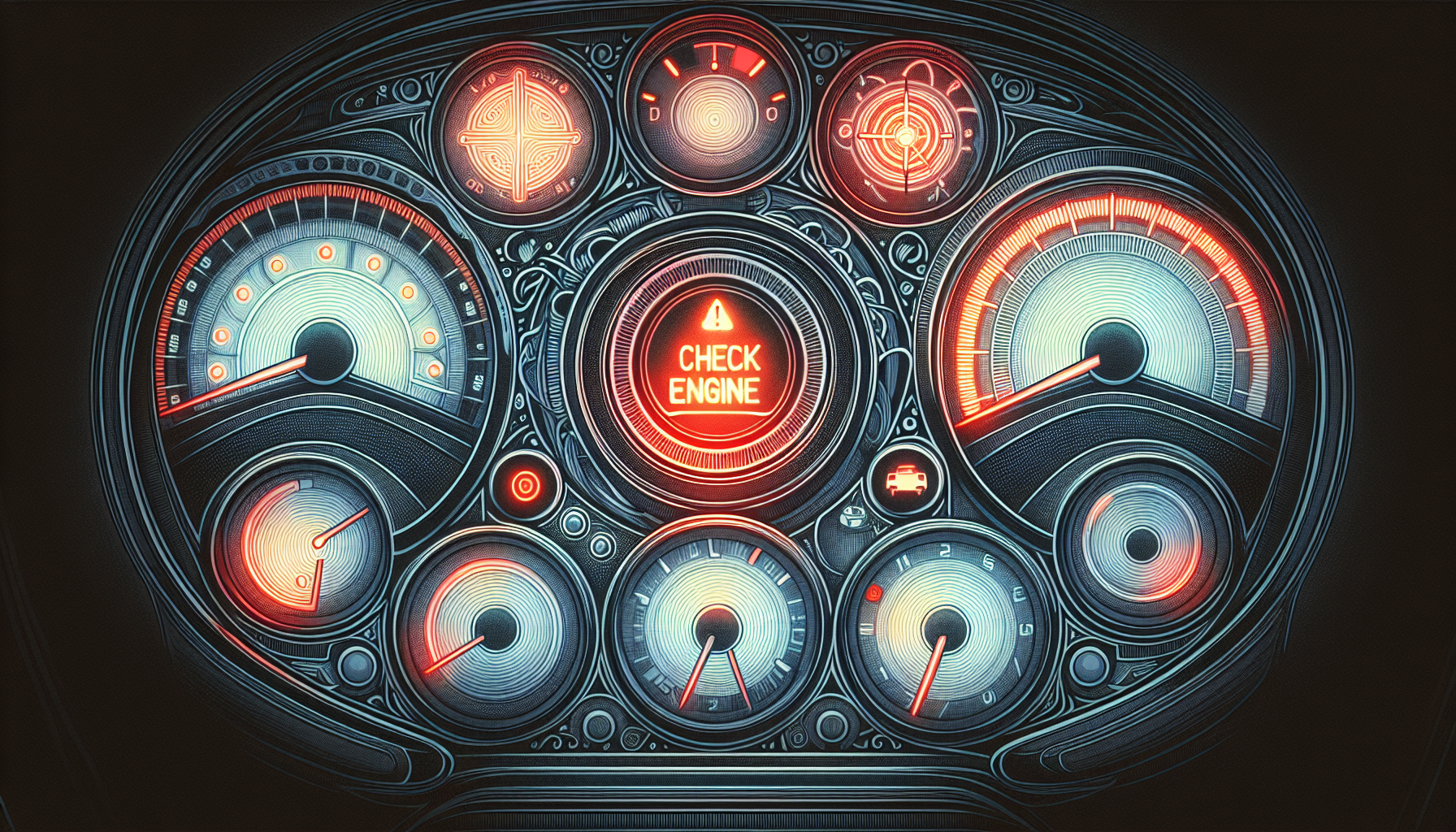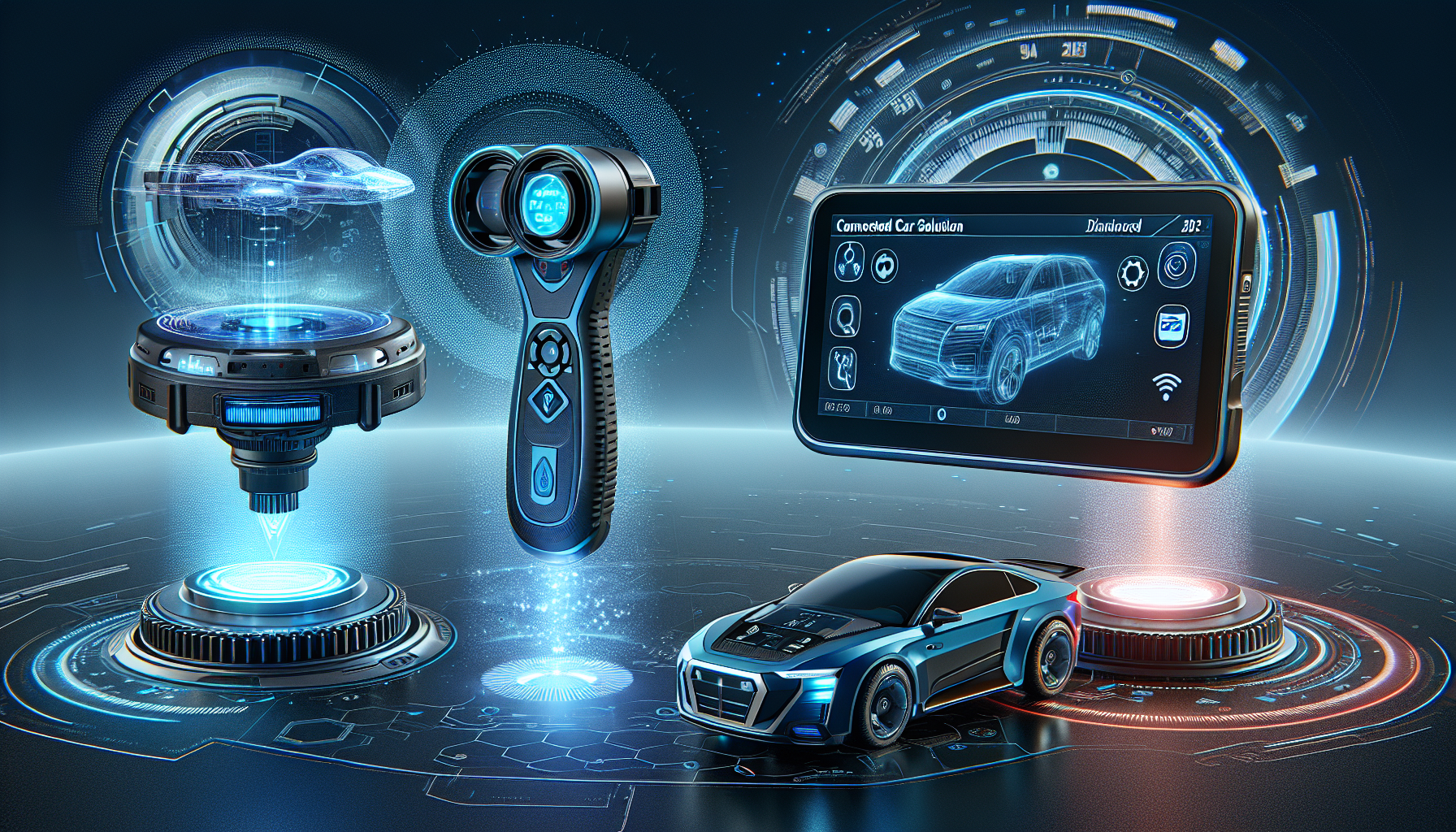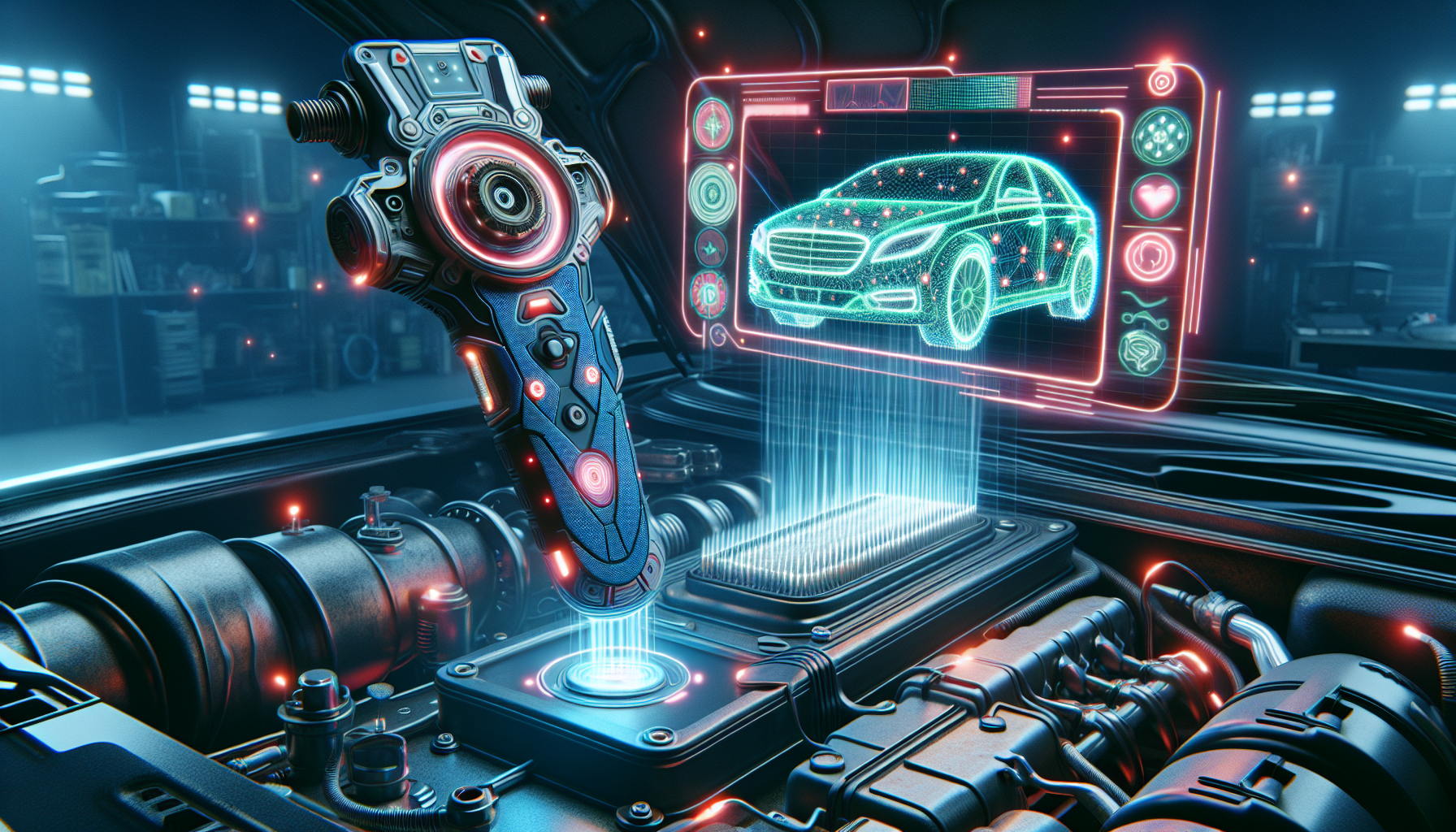Has your car’s check engine light turned on? A diagnostic tool for check engine light can help you find the problem quickly. In this article, we’ll explore the top tools of 2024 that can help you diagnose and fix your car issues efficiently.
Key Takeaways
- The check engine light is a crucial component of a car’s onboard diagnostics system, alerting to potential issues ranging from minor (like a loose gas cap) to severe (like engine misfires), and should be addressed promptly to avoid extensive damage and maintain vehicle efficiency.
- OBD-II scanners are essential for diagnosing car issues by reading trouble codes stored in the vehicle’s memory, with top tools in 2024 being Carly Connected Car Solution, BlueDriver Bluetooth Pro, and Innova 5610, each offering unique features tailored to different diagnostic needs.
- Key features to look for in diagnostic tools include live data graphing, code reading capabilities, Bluetooth connectivity, and up-to-date software, all of which enhance the tool’s functionality and ensure comprehensive vehicle diagnostics.
Understanding the Check Engine Light

The check engine light, far from being merely a yellow warning indicator on your dashboard, is a vital part of your car’s onboard diagnostics system. This small light signals a problem within your vehicle’s electronic control system, monitoring various performance aspects like engine speed and fuel mixture to keep your car running efficiently.
When this light illuminates, it stores a trouble code in the vehicle’s memory, pinpointing the source of the issue. Common reasons for its activation range from a loose gas cap to an engine misfire or a malfunctioning sensor. Warning lights, such as the check engine light, should not be ignored as they can result in poor fuel economy, elevated emissions, and potentially severe damage to costly components. A steady check engine light means the problem isn’t an emergency but should be checked soon, whereas a blinking light indicates an immediate issue that needs urgent attention, like a severe engine misfire that could damage the catalytic converter.
Prompt response to the check engine light can:
- Prevent expensive repairs
- Maintain your vehicle’s efficiency
- Keep your car on the road
- Maintain its health and performance
Comprehending the importance of this light and the appropriate response can have a substantial impact on load value.
How Diagnostic Tools Work
The key to diagnosing car issues is the OBD-II system, a standardized, computer-based system that has been installed in all U.S. vehicles since 1996. This system acts as the brain of your car, constantly monitoring its health and storing trouble codes when something goes wrong. To tap into this wealth of information, you need a car code reader or an OBD-II scanner.
Using a car scanner, specifically an OBD-II scanner, is straightforward. Here’s how to do it:
- Locate the OBD-II port, usually located under the dashboard near the steering column.
- Connect the scanner to the OBD-II port.
- Turn the vehicle key to the ‘on’ position but keep the engine off.
- Retrieve error codes that tell you what’s wrong with the vehicle.
- Many modern diagnostic tools even connect to your smartphone via Bluetooth, making it easier than ever to read and interpret these codes.
This smooth process simplifies complex diagnostics, putting vehicle maintenance control back into the hands of car owners.
Top Diagnostic Tools for 2024

As technology evolves, so do the tools we use to maintain our vehicles. In 2024, the market is flooded with diagnostic tools, but three stand out: the Carly Connected Car Solution, the BlueDriver Bluetooth Pro, and the Innova 5610. Each offers unique features tailored to different needs, from handling engine misfires to providing in-depth repair reports.
We’ll further explore what sets these tools apart as the top choices for car owners this year.
Carly Connected Car Solution

The Carly Connected Car Solution is a standout tool, especially for diagnosing misfire-related issues. This car code reader connects to your vehicle and provides real-time data, helping you pinpoint problems with precision. One of its most appealing features is the Carly Repair Costs, which estimates potential repair expenses, giving you a clear idea of what to expect financially.
Carly’s app offers the following benefits:
- User-friendly interface
- Seamless integration with your smartphone
- Intuitive and accessible diagnostic process
- Comprehensive features
- Ease of use
Whether you’re a seasoned mechanic or a car owner looking to understand more about your vehicle, Carly’s app is an invaluable tool in your automotive toolkit.
BlueDriver Bluetooth Pro
The BlueDriver Bluetooth Pro is another top contender, known for its:
- User-friendly app
- Advanced diagnostic capabilities
- Integration with smartphones via Bluetooth
- Highly portable design
- Continuous app updates to ensure ease of use and the latest features
One of BlueDriver’s standout features is its ability to provide model-specific repair reports, enhancing its diagnostic capabilities. It also reads enhanced diagnostic codes, including:
- ABS
- SRS
- TPMS
- Airbag errors
This makes it a comprehensive solution for most car owners. Additionally, the device can automatically detect the make and model of many vehicles, with manual input via VIN as a backup. This level of detail and accuracy makes BlueDriver a trusted companion for diagnosing and fixing vehicle issues.
Innova 5610
The Innova 5610 is praised for its reliability and functionality, making it a favored choice among car enthusiasts and professionals alike. Users appreciate its comprehensive range of features, which include detailed diagnostics and real-time data monitoring.
Adding to its appeal, the Innova 5610 often comes with discounts, making it an even more attractive option for those looking to invest in a quality diagnostic tool without breaking the bank. Its proven track record of reliable performance and user-friendly features make it a valuable addition to any garage.
Key Features to Look for in a Diagnostic Tool
Several features are crucial to consider when choosing a diagnostic tool, to maximize value and functionality. Live data graphing is crucial as it displays real-time vehicle data in a graph format, allowing you to see immediate changes and trends. This feature is beneficial for monitoring the health of your car over time and catching issues before they become major problems.
Code reading capabilities are another must-have. A good diagnostic tool should be able to read and clear diagnostic trouble codes (DTCs), giving you insight into your vehicle’s issues and the ability to reset the check engine light after repairs. Bluetooth connectivity is also a significant advantage, as it allows for wireless data transmission to a smartphone or tablet, making the diagnostic process more convenient and efficient.
Lastly, it’s important to regularly update your software. Keeping your diagnostic tool’s software up to date ensures it can handle the latest vehicle models and technologies. This means your tool remains relevant and effective, providing accurate diagnostics and solutions for years to come.
Benefits of Using OBD-II Scanners
The numerous benefits of OBD-II scanners render them indispensable for vehicle maintenance. One of the primary advantages is cost savings. By allowing vehicle owners to perform their own diagnostics and clear codes, OBD-II scanners reduce the need for expensive mechanic visits. This not only saves money but also gives car owners more control over their vehicle’s health.
The benefits of OBD-II diagnostic scanners include:
- Portability: Compact and easy to use, they provide peace of mind during travel by enabling on-the-go diagnostics.
- Engine efficiency: OBD-II scanners help ensure engine efficiency and emissions are maintained.
- Quick connection: They quickly connect to cars and clear codes, making them a cost-effective and convenient tool.
How to Interpret Diagnostic Trouble Codes (DTCs)
For any car owner using a diagnostic tool, the ability to interpret Diagnostic Trouble Codes (DTCs) is crucial. These codes are generated when the system detects an issue in the vehicle’s operation, consisting of five characters that provide specific information about the problem. The first character indicates the system facing the issue, such as:
- ‘P’ for powertrain
- ‘B’ for body
- ‘C’ for chassis
- ‘U’ for network
Understanding fault codes can help you identify and address any issues with your vehicle.
The OBD-II diagnostic trouble codes consist of five characters:
- The first character is a letter: ‘P’ for powertrain, ‘B’ for body, ‘C’ for chassis, and ‘U’ for network.
- The second character is a number: ‘0’ for generic codes applicable to all vehicles and ‘1’ for manufacturer-specific codes.
- The third character identifies the specific system malfunction, such as ‘1’ for fuel and air metering and ‘3’ for ignition systems.
- The fourth and fifth characters, known as the ‘Specific Fault Index,’ identify the exact malfunction within the system.
To interpret these codes accurately, consult your vehicle’s user manual for a list of common error codes and their meanings. Additionally, numerous online databases can help you decode error codes and find potential solutions.
By understanding these codes, you can effectively diagnose and address issues, ensuring your vehicle operates smoothly.
Step-by-Step Guide to Using a Diagnostic Tool
The process of using a diagnostic tool is straightforward and accessible to anyone. Here are the steps:
- Plug the OBD-II scanner into the vehicle’s OBD port, usually located near the steering column.
- Turn the vehicle key to the ‘on’ position without starting the engine.
- Press ‘read’ on the scanner to retrieve error codes.
To reset the check engine light on your vehicle, follow these steps:
- Record the codes displayed by the scanner to identify the issues that need fixing.
- Once the necessary repairs are made, press ‘erase/clear’ on the scanner to reset the check engine light.
- Ensure your vehicle is back to optimal performance.
This easy-to-follow guide enables car owners to handle their vehicle maintenance and address issues quickly, ensuring efficient repairs.
Common Issues Detected by Diagnostic Tools

Diagnostic tools are highly efficient at pinpointing a range of common vehicle issues by identifying the diagnostic trouble code. One frequent problem is with the catalytic converter, indicated by a DTC code starting with ‘P0420’, which signifies that oxygen levels are below desired thresholds. Ignition system problems, such as engine misfires and defective spark plugs, are also commonly detected.
Additionally, OBD-II scanners often identify issues with the vehicle’s:
- battery and charging system
- oxygen sensors, which can lead to poor engine performance and reduced fuel efficiency
- mass airflow sensors
- exhaust gas recirculation (EGR) system, such as clogged valves
Recognizing these issues early can save you from more significant problems down the line.
Frequently Bought Together Accessories
When buying a diagnostic tool, certain accessories are often bundled together to enrich the diagnostic experience and maintain the tool properly. For instance, Grease Monkey Traction Grip Nitrile Disposable Gloves are popular for preventing oil and dirt from contaminating both the tools and your hands during diagnostic work. Similarly, the Hyper Tough 113 Piece 1/4 and 3/8 inch Drive SAE Mechanics Tool Set provides essential tools, complementing the usage of diagnostic tools for minor repairs and adjustments.
Other useful accessories include:
- Big Red 3 Ton Steel Jack Stands, which offer double locking mechanisms for safe car lifting and access to the vehicle’s underside
- Brake fluid testers, which ensure the quality and safety of the vehicle’s braking system
- Premium diagnostic accessories like various connectors and cables, which enhance the functionality and connectivity of OBD-II scanners, ensuring a more comprehensive diagnostic process.
These accessories make your diagnostic setup complete, supplying all essential equipment for effective and precise vehicle maintenance.
Customer Reviews and Ratings
Valuable insights into the performance and dependability of diagnostic tools can be gleaned from customer reviews and ratings. The Carly Connected Car solution, for instance, includes a yearly subscription model, which has been a point of contention among some users. Delivery of Carly hardware, such as the dongle, can take more than 2.5 weeks, affecting the start of the subscription period. However, Carly’s customer service is noted as responsive, helping users with queries regarding delivery and technical issues.
The BlueDriver Bluetooth Pro is highly rated on Amazon, with an average of 4.6 out of 5 stars. Users appreciate its large, sharp, and clear screen, finding it particularly useful for weekend auto-repair enthusiasts due to its accuracy and long-lasting functionality. The Nexpow OBD2 Scanner is also praised for its ease of use, simplicity, and durability, earning a perfect 5 out of 5 stars in customer reviews.
These reviews emphasize the need to select a diagnostic tool that aligns with your specific requirements and expectations. Customer feedback can guide you in selecting a reliable tool that performs well over time and provides valuable support for vehicle maintenance.
Troubleshooting Tips
Even top-tier diagnostic tools can encounter problems, but understanding how to troubleshoot common issues can save you both time and frustration. If your OBD-II scanner isn’t connecting to the ECU, a broken wire in the car’s harness could be the culprit. Ensuring the OBD-II port, also known as the obdii data link connector, has power is crucial for proper scanner connectivity. Additionally, make sure the port is clean and free from debris to avoid connection issues.
Check the integrity of the connecting cable for any signs of damage or wear, as this can resolve many connectivity problems with scan tools. Verify that the scanner is receiving sufficient power; low battery levels can significantly affect its performance. Users have also noted concerns about the live data feature not updating quickly enough to be helpful, so ensuring your scanner’s software is up-to-date can mitigate this issue.
Following these troubleshooting tips can ensure your diagnostic tool functions efficiently, guiding you in the right direction for vehicle repairs and maintenance.
Summary
In conclusion, understanding and addressing the check engine light promptly is essential for maintaining your vehicle’s health and performance. Diagnostic tools like the Carly Connected Car Solution, BlueDriver Bluetooth Pro, and Innova 5610 offer advanced features and user-friendly interfaces, making it easier than ever to diagnose and fix vehicle issues. By investing in a quality diagnostic tool and the right accessories, you can save money, ensure efficient repairs, and keep your car running smoothly for years to come.
Frequently Asked Questions
What is the check engine light, and why does it come on?
The check engine light is a yellow warning indicator on your dashboard that signals a problem with your vehicle’s electronic control system, such as a loose gas cap, engine misfire, or malfunctioning sensor. It is important to have it diagnosed and repaired promptly to avoid potential costly damage to your vehicle.
How do OBD-II diagnostic tools work?
OBD-II diagnostic tools work by connecting to your vehicle’s OBD-II port to read error codes stored in the vehicle’s memory, providing information about specific issues. This helps in identifying and troubleshooting problems efficiently.
What features should I look for in a diagnostic tool?
When choosing a diagnostic tool, look for features such as live data graphing, code reading capabilities, Bluetooth connectivity, and regular software updates to stay compatible with the latest vehicle models. These features will help you effectively diagnose and troubleshoot vehicle issues.
What are the benefits of using OBD-II scanners?
Using OBD-II scanners can help you save costs on diagnostics, troubleshoot on-the-go, and maintain engine efficiency by quickly identifying and clearing error codes.
How can I interpret Diagnostic Trouble Codes (DTCs)?
To interpret Diagnostic Trouble Codes (DTCs), consult your vehicle’s user manual and online databases for information about the code’s specific system and issue, as well as potential solutions.
